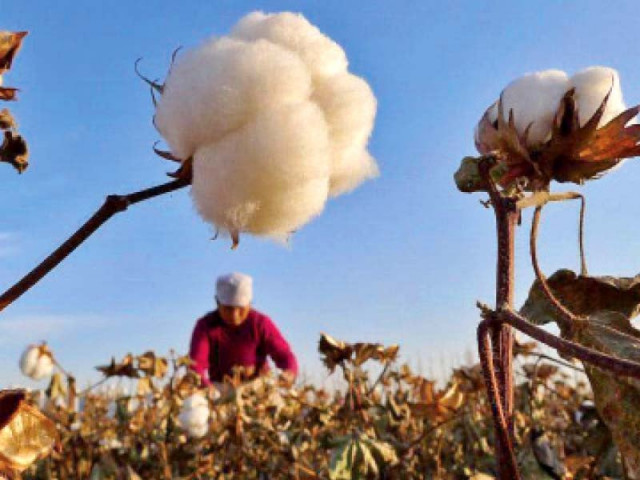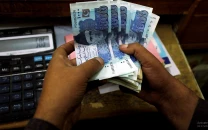China to bolster textile sector
Cooperation in cotton industry providing possibilities for textiles

If you walk into a clothing store in any shopping mall in a major Chinese city – whether it is an international or a local brand – “Country of Origin: Pakistan” hang tag is not uncommon.
Especially in the jeans wear section, these high-quality Pakistani products are increasingly popular with Chinese consumers.
According to the Pakistani government, the textile industry contributes nearly 60% to the country’s total exports. Denim fabric, as one of Pakistan’s main garment products exported to the world, occupies a pivotal position in its garment industry chain.
According to the Pakistan Bureau of Statistics (PBS), exports of denim fabric from Pakistan reached Rs96.92 billion during the year 2017-18, a commendable performance of the denim sector.
However, whether it is jeans wear or other garment products, the impact of recent global cotton prices and other factors cannot be ignored.
Pakistani industrialists argue that the textile and garment industry of the country faces a series of challenges, including low production of cotton and difficulty in obtaining financing for new facilities.
Cotton industry: China-Pakistan cooperation
Pakistan, one of the world’s largest cotton producers, is finding it increasingly hard to meet its own needs.
“Last year, we had to import more than 50% of cotton,” said Sapphire Fibre Executive Director Muhammad Abdullah. Low production and quality force the local industry to choose imports.
“So far, the domestic consumption of cotton is 14 million bales. Nevertheless, Pakistan only harvested 5.6 million bales of cotton in the last season,” he said.
“As far as I am concerned, the seed of high quality must be the top priority. Unless we can increase the yield per unit area, the demand cannot be met,” he added.
The idea of Muhammad Abdullah was echoed by Central Cotton Research Institute Director Zahid Mehmood. “Under CPEC, we hope to see the plan between China and Pakistan in cottonseed cooperation soon,” he said.
Regarding this, Xinjiang Agricultural University Deputy Dean Chen Quanjia introduced further planning during an interview with China Economic Net.
“Local high temperature-resistant cotton varieties in Pakistan are of great use to us,” Quanjia said. “In Xinjiang, the heat resistance of cottonseed is particularly indispensable when facing the extreme high temperature. At the same time, our high-yielding cotton varieties are also needed for Pakistani farmers,” he said.
Recently, international cotton futures have remained high, and China’s domestic cotton futures prices have also risen simultaneously.
According to a survey conducted by the China Cotton Association, the country’s cotton planting area this year has dropped year-on-year, but due to favourable weather conditions, the total output remains relatively stable.
It is expected to be 5.83 million tons, down 1.5% year-on-year. Improving cotton production to maintain the stability of the futures market will be a problem, demanding prompt solutions from China and Pakistan.
Besides, the impurity, which is caused by 100% manual picking, also worsens the dilemma of Pakistan cotton.
Sapphire Fibre cotton field supervisor Kamran Razaq said that the impurity content of imported cotton is 4.5%, while the counterpart in Pakistan cotton is 8-9%, which is well below the criteria of textile mills.
Accordingly, Xinjiang Agricultural University and University of Agriculture Faisalabad (UAF) have set up experimental fields in Faisalabad and plan to test mechanical picking in Pakistan.
“In north Xinjiang, one of the biggest cotton areas in China, the mechanisation can reach 90%. We use machine picking everywhere so as to decrease the impurities,” Chen Quanjia said, adding that in future, China’s advanced cotton pickers can play a role in Pakistan as well.
CPEC projects: cures for textile
Apart from raw material shortage, financing difficulty is also a restraining factor in Pakistani textiles. In this regard, China and Pakistan are seeking for a wider cooperative space.
National Textile University Faisalabad Chairman of Department of Garment Manufacturing Abher Rasheed told CEN that Pakistan and China can collaborate in two main areas, which are accessories and fabric.
China has the capacity in both areas while Pakistan has a comparatively cheaper workforce available. Joint ventures in both areas could create a positive impact, he emphasised.
Obviously, his ideas coincide with some Chinese entrepreneurs with a strategic vision.
“The strong bilateral ties between China and Pakistan provide great convenience for our local investment,” said Karen Chen, Managing Director of Challenge Fashion, a Chinese company investing $150 million in an industrial park on Lahore’s border with Kasur.
THE ARTICLE ORIGINALLY APPEARED ON THE CHINA ECONOMIC NET
Published in The Express Tribune, November 23rd, 2021.
Like Business on Facebook, follow @TribuneBiz on Twitter to stay informed and join in the conversation.


1728020501-0/Express-Tribune-Web-(13)1728020501-0-208x130.webp)
















COMMENTS
Comments are moderated and generally will be posted if they are on-topic and not abusive.
For more information, please see our Comments FAQ